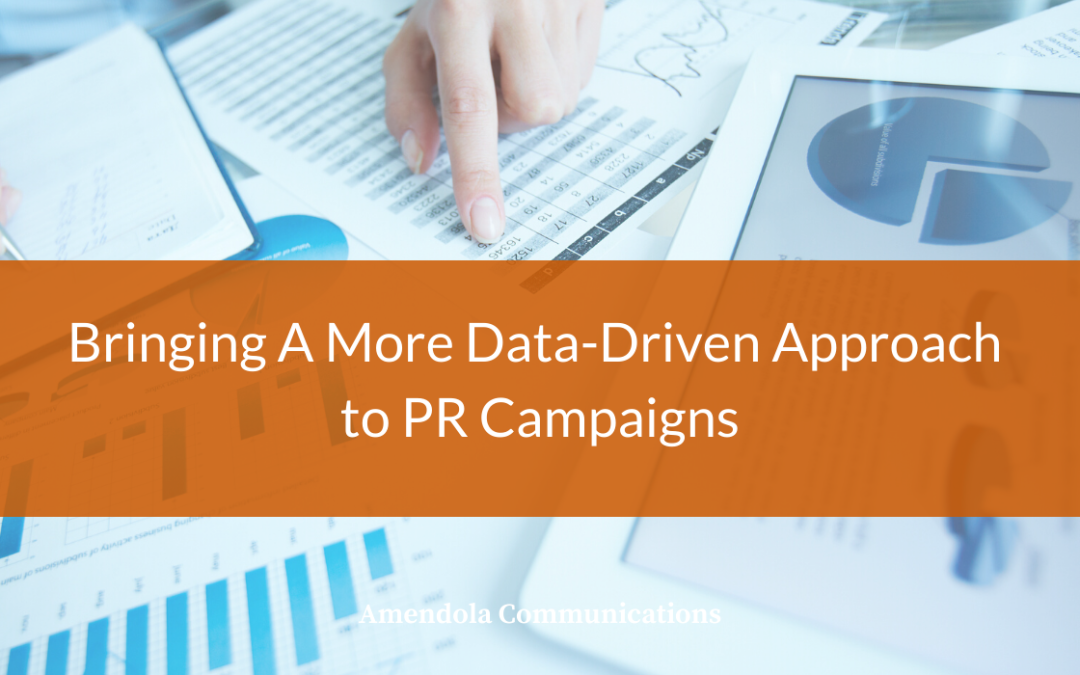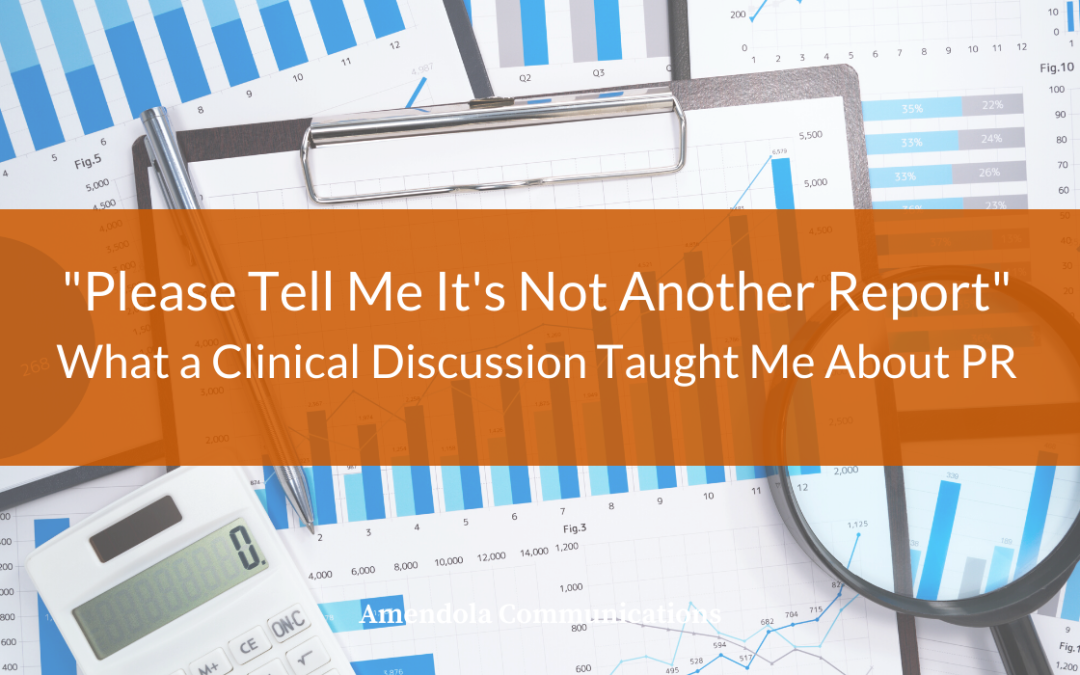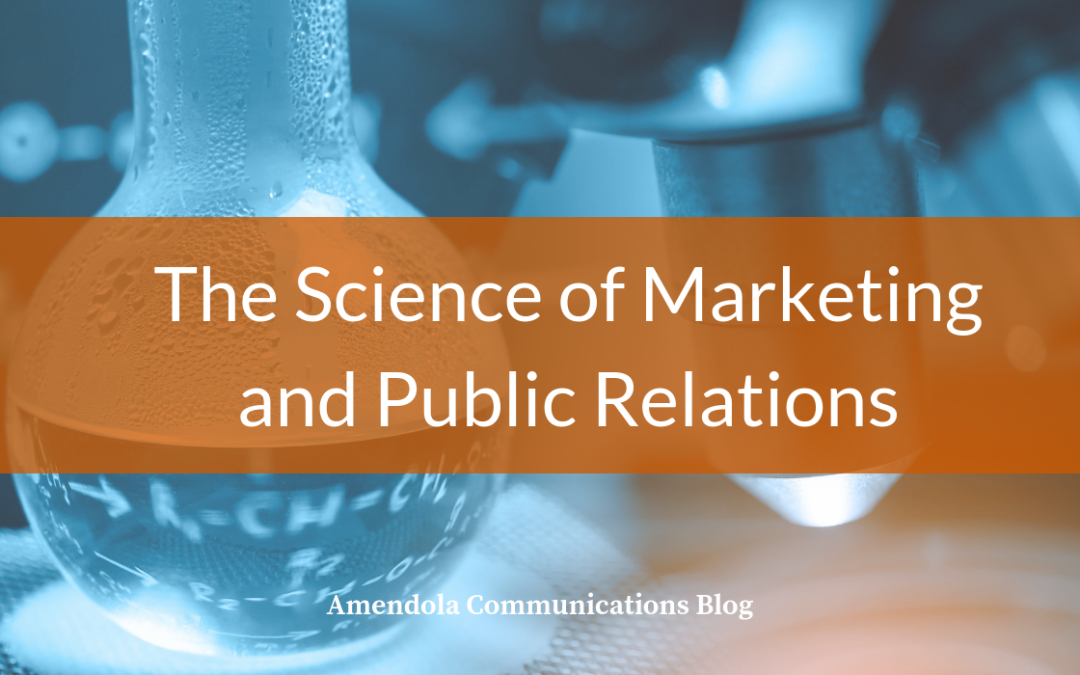
by Janet Mordecai | Apr 16, 2025 | Blog
Healthcare is complicated and constantly evolving. From navigating strict regulations to addressing diverse stakeholders, healthcare sales teams operate in an increasingly competitive and nuanced environment. Fortunately, marketing teams can play an essential role in amplifying and supporting sales efforts and ensuring sales teams have the tool kit required to deliver success. Working hand-in-glove with sales, marketing can help build cohesive and persuasive messaging, comply with regulatory requirements, and support lead generation with strategically crafted content and campaigns designed to capture the attention of target audiences, nurture their interest, and encourage them to take specific actions.
The Healthcare Sales Landscape
It’s no surprise that healthcare sales teams, in particular, face challenges directly related to the diversity of their target audiences, ranging from hospitals to health plan CEOs to clinicians and patients. Each stakeholder has unique priorities and pain points that must be addressed with a tailored solution or call to action. It’s also true that the U.S. healthcare industry is subject to strict regulations, such as HIPAA, which makes compliance a crucial factor in sales and marketing strategies. Marketing teams can help lay a solid foundation that builds trust, and bolsters thought leadership with clients, prospects, and patients.
Generating High-Quality Leads
In my decades of experience in marketing, lead generation is a crucial focus for sales/marketing collaborations – after all, it’s the core of business growth. Leads drive sales opportunities, boost revenue, and increase brand awareness, and it’s one of the main activities in which marketing can support sales objectives. Without compelling and engaging content, sales can’t drive to the bottom of the funnel. That’s where marketing comes in. A healthcare marketing team can create a white paper on the benefits of a new diagnostic tool or host a webinar on improving patient outcomes through innovative technology.
By providing valuable insights and thought leadership, marketing teams capture leads and position their organization as an industry authority. This establishes credibility and trust, making it easier for sales teams to initiate conversations and close deals.
Equipping Sales Teams with Enablement Tools
Marketing’s role, however, doesn’t stop with lead generation – it can and should move into building an integrated strategy and tactics that provide sales teams with the “enablement” tools and resources to convert leads into clients. These resources may include:
- Sales Collateral: Brochures and product guides tailored to the needs of different stakeholders.
- Pitch Decks: Customizable presentations highlighting key product or service benefits.
- Battle Cards: One-page documents comparing your product or service to competitors that help sales address objections and highlight key differentiators.
- Customer Personas: Detailed profiles of target buyers, including pain points, motivations, and preferred communication styles. These guide sales teams in personalizing their outreach.
- Whitepapers or eBooks: High-value content pieces that establish thought leadership and can be shared with leads to nurture trust and demonstrate expertise.
By creating resources that align and support the sales team’s objectives, marketing can help ensure that every interaction with potential clients is meaningful and impactful.
Creating a Cohesive Narrative
Building and implementing consistent messaging is crucial for sales and marketing, serving as a strong foundation for engagement and customer loyalty. This is especially true in today’s healthcare environment, where trust and credibility are paramount to growth and sustainability. Here again, marketing teams can play a vital role in creating a cohesive narrative that aligns with the organization’s mission and values. Marketing can also help weave this cohesive narrative through all communications and channels, from website content to social media posts and email campaigns.
A unified message strengthens the organization’s brand and ensures that sales teams deliver a consistent pitch to clients for a seamless customer experience, increasing the likelihood of success.
Driving Sales Through Digital Engagement
We live in a digital-first landscape, which means marketing should also support healthcare sales teams by leveraging digital channels to engage prospects and clients. Targeted advertising, search engine optimization (SEO), and social media campaigns allow marketing teams to reach potential and existing clients where they are most active and open to engaging. Additionally, digital channels can enable personalized and timely communication, nurturing leads throughout the sales funnel.
For example, a targeted LinkedIn campaign might highlight a new study demonstrating the efficacy of a medical device, driving traffic to a dedicated landing page where prospects can learn more or request a demo. This kind of digital engagement generates leads and keeps them engaged until they’re ready to connect with a sales representative.
Measuring Success and Refining Strategies
Accurately measuring success and adjusting strategies requires continuous collaboration between marketing and sales to meet evolving business objectives and revenue goals. So, it’s best to begin any sales/marketing initiative with an agreement on which key performance indicators (KPIs) will provide valuable insights into what’s working and what isn’t.
Together, marketing and sales can jointly optimize campaigns and improve through open lines of communication and sharing data and strategic insights. This open approach also ensures that organizations remain agile and responsive to changing market dynamics.
Conclusion
The complexity and rapid evolution of the healthcare industry necessitate collaboration between marketing and sales to help drive business and revenue growth and improve client success. Marketing supports lead generation and empowers sales teams with the resources, insights, and narrative consistency they need to succeed. By working together, marketing and sales can navigate the complexities of the healthcare landscape, driving growth and making a meaningful impact on patients and providers.

by Jodi Amendola | Apr 29, 2020 | Blog
As the presidential election cycle heats up we are hearing more and more about how certain campaigns are making (and have made) imaginative use of data to help boost their candidates’ chances of success. A good example is a story I heard recently about the early stages of Michael Bloomberg’s now-abandoned campaign.
According to the story, the campaign did some research to determine where the 50-100 most influential TV political talking heads live. They then made an effort to place yard signs in those neighborhoods, and perhaps all along the pundits’ route to work, to make it look like there was an organic groundswell of support for the former mayor of New York City so they would talk about it.
Pretty clever if true, wouldn’t you say? What’s more significant is that it’s plausible.
We’ve all heard stories about campaigns using sophisticated analytics to micro-target ads on social media. They may have hundreds or thousands of data-driven variations designed specifically to push exactly the right buttons of the individual who sees those ads.
In other words, the ads I see may be very different than the ads you see or our neighbors see. But they are meaningful to each of us.
One area of integrated marketing that has typically been difficult to quantify in this way is public relations. This is due to the nature of PR itself.
When you see an ad on the Internet or TV, receive a marketing email or even get a piece of snail mail, there is usually a next step you can take. You can click on link (sometimes inadvertently, thereby dooming you to forever see messages that make your blood boil), heed the urgent yelling to “CALL NOW!!!,” text a five-digit number, etc.
With PR, however, that is usually not the case. To respond to an article that captures your interest you actually have to go out of your way (the horror!) to search for a company. Or at least type in a URL. Without an action, it’s difficult to get a read on just how effective the PR campaign has been in capturing the hearts and minds (and potentially the wallets) of your target audience.
Difficult, but not impossible. Earlier this year I wrote the blog post “Three Ways to Make Your PR Campaigns More Data-Driven” for the Forbes Agency Council. It offers some key insights not only into how to measure the effectiveness of your PR campaigns but also what to measure. (SPOILER ALERT: It’s not ad equivalency, which has always been one of the worst measures of the quality of PR.)
If you’d like to learn what those ways are, follow this mercifully shortened link to the original article.
While PR may still not have the sophisticated analytics of the more advanced election campaigns, it has definitely come a long way in the last few years. Be sure you’re up on all the latest options so you can take advantage of them.
There are plenty of classes you can take. Or you can shortcut the process by letting a data-driven PR agency like Amendola Communications do it for you.
Interested? Send me an email or shoot me a text and we’ll help you make your campaign a winner.

by Megan Smith | Nov 13, 2019 | Blog
We work in a niche part of PR healthcare with a heavy focus on technology so as you can imagine we have extremely nuanced discussions about the work that our clients do. This includes how their technology, service or offering impacts the world, what differentiates it from competitors and why providers, payers or employers need this technology.
We spend hours meticulously parsing through the language that accurately, yet simply, conveys what the technology or service our client provides so that our target audience can understand.
Recently though, I have realized that we in marketing and comms tend to turn around and play back the results of our work in the exact same manner but in our own jargon impressions, hits, tonality.
Just a few weeks ago, I was discussing messaging with a client for a new product, and they relayed a point to me that struck a chord for the work we do on both sides of the business. The team said that the clinicians do not want another report that they have to weed through. They want technology, partners and leaders who don’t just shove another report down their throats. They want digestible information that helps them in their day-to-day workflows.
That, of course got me to thinking. I write reports regularly. Reports of media coverage garnered, work done that month or quarter or year, reports on what we anticipate the outcome will be. But am I oversaturating my main audience like healthcare technology vendors are oversaturating clinical teams?
The answer is simple yes.
PR is perceived as the silver bullet that can fix all of a company’s issues. But there are two issues:
1. It is not a silver bullet and there is a lot of work that is needed operationally to turn around an organization, and
2. It is really, really hard to measure.
What do we as PR professionals do? We flood our market with reports we show how many impressions we may have secured, how one tool shows how the tone of the discussion changed and more.
But what we are not consistently giving is digestible advice on what this means for their day-to-day workflows how should they implement changes, what changes need to be implemented, where can we improve?
While I don’t have all the answers, I am working to improve my reports to provide that quick advice on what needs to be changed or considered to make all our activities more impactful.
How have you altered reporting to make sure your clients get the most of your partnership?

by Stacy State | Jun 5, 2019 | Blog
You got approval for a $3 million marketing budget from the C-suite.
While that may sound small to some and exorbitant to others the one guarantee is the marketing team will be required to “prove their value” after the money is spent.
Unlike some other departments who can say we bought 100 widgets at $1 instead of $2 saving the company $100 as marketing has grown more complex over the years, it has also become more difficult to show the return on investment at the end of the day.
But, we all know that saying “it’s difficult to measure” or even worse “we don’t know what value we got from that byline or advertisement” is not an acceptable response to leadership. The C-Suite, rightly so, wants to understand what they are getting for their money. Likewise, we wouldn’t pay thousands of dollars on a car without expecting it to work every day and last for several years. We want to know we got our money’s worth.
Marketers and public relations experts must learn the data and science of the profession. So, how do you measure a byline, a press release, an email campaign, social media, or an advertisement?
Step 1: Know the goals
Do not skip this step! Before embarking on an extensive marketing strategy that the team spent weeks putting together, know your company goals. What are leadership’s short-term and long-term plans? Is it a start-up needing more brand recognition or is it in a growth-stage needing quality lead generation?
Understanding where the company is today and where leadership is heading will help drive your marketing strategy. Share your marketing plans with the leadership team to get buy-in and agree upfront on the metrics that you plan to measure.
Step 2: Set the metrics and know the terminology
Now that you know the goals, it’s time to set your success metrics. How will you know if your plan is successful? Depending upon your strategy, you will use varying measures for different tactics. Below is a subset to consider.
Share of Voice (SOV): Measure the percentage of coverage and mentions of your brand in the media compared to your competitors.
Coverage: Track the number of times your brand is mentioned in the media along with where it is mentioned.
Website traffic: Google Analytics is a very useful tool to monitor unique page views, bounce rates, conversion rates, average session duration, and referral sites.
Domain authority: A term coined by Moz your domain authority ranking will compare your overall website, including SEO and keyword rankings, to give you a number 1-100. The higher the number the great authority your site holds within your industry.
Social Media: Track beginning and ending metrics including followers, likes and shares. Determine which content and messaging provides the greatest engagement with your audience.
Impressions and click-thru rates: With advertisements you will want to view not only the number of people that saw your ad but more importantly, how many clicked on your ad.
Conversion ratios: The percentage or ratio of people that clicked on an email, ad, or social content, etc. that then completed a call-to-action. This includes downloading content, completing a form for a demo, and even registering for a webinar.
Open rates and click-thru rates: When delivering emails or drip campaigns, you can monitor their success based upon the number of people that opened the email and the number of people that then clicked on a link within the email.
Cost-per-lead (CPL): To many in leadership, if you start speaking in terms of CPL you’ll be speaking their language. Calculating the costs of your activity divided by the number of leads you gained will give you the CPL.
Marketing qualified lead (MQL): While this one is probably one of the most important, the definition often varies from company to company. Typically, this is a lead that has a business need, understands what you offer, and has an interest in buying your product or service.
The metrics you choose should align appropriately with the tactics you will produce and the goals of your company. Putting these in place upfront will help avoid confusion at the end of the year.
Step 3: Make sure you have the right tools
While many marketers did not get into marketing to become data analysts, the move toward digital marketing requires a successful marketer to understand and use data wisely. Fortunately, many companies have developed tools to help analyze marketing results and prove value. There are many free or relatively inexpensive tools you can use to monitor your metrics.
Most marketers will start with free tools, and depending on the complexity of their business may purchase additional tools. Due to the overwhelming number of tools on the market, make sure you understand exactly what you are getting and any feature restrictions or limitations. In addition, make sure you use all the benefits of your marketing tools. Often you may purchase an email marketing tool without realizing you can also create landing pages, deliver social strategies and even host your webpages.
The key is not to get overwhelmed. Know what you need to measure and select the tools that are right for you.
by Jodi Amendola | Sep 26, 2018 | Blog
Social media is often misunderstood as an unnecessary evil, especially in healthcare, but it is an amazing tool that allows you to reach your audience in a way that was never possible before. While developing and maintaining an online community does take time and resources, events like this allow users to reap some of the benefits quickly.
Even if you don’t have an internal social media coordinator or an amazing agency managing your online presence, you can still participate in National Healthcare IT Week and other similar events. Here are six reasons to jump on board if you haven’t already.
- Engage with like-minded people and companies. These types of events create a community around the cause. By finding like-minded people you may be able to make beneficial connections that wouldn’t be possible otherwise.
- Gain a better understanding of the conversation. Conversations during these events come from a variety of perspectives. It’s common to get stuck viewing the world with tunnel vision by reviewing the same new sites, having favorite writers and viewpoints.
- Find new influencers. Participating in events like this including tweet chats are a great way to quickly find people with similar ideals with your company. You might find people experiencing problems you can solve.
- Gain trust with your target market. Trust is one of the most important aspects of the customer experience. These events offer a condensed time-frame that allows you to be a part of the conversation. It’s a great opportunity to show other users that your company actualThe question I hear most often from new clients and prospects is, “How do we know if PR program is working and how can we measure our success?”It’s not an easy question!To begin with, the goal of PR is to increase brand awareness and that’s not an easily quantifiable objective. It almost always comes from multiple touch points, plus calls for insight into different media outlets true audience numbers. That’s something my team works hard to get, as we’re not content to just take as a given the numbers these outlets report.
But here’s where the questions about PR success get scary for some in our profession. What customers and prospects really want to know is, how many leads will a PR program generate?
Honestly, this is only quantifiable if you put the work into web analytics and lead scoring, and tightly align your PR and marketing teams. We love our clients that go these extra lengths! Even better if you can align with a service such as Meltwater to measure and track placements and sentiment.
But that said, I have to tell you we hear from clients regularly that lead gen is a happy byproduct of PR, even when they aren’t taking those extra steps!
Here are just a few real examples of this PR magic:
- After securing a case study commitment from a hospital that used our client’s predictive analytics, we were able to place this customer success story in a healthcare publication that hospital CIOs regularly read. Sure enough, our client’s phone was soon ringing from a CIO who had read the story and said, “This is the tool we ought to be using.” Shortly after, this hospital launched a pilot of our client’s solution, and from there, became a full-fledged and highly quotable customer.
- We landed one of our clients a coveted spot on a leading publication’s symposium on the opioid crisis. After the panel discussion, a prospect approached our client, who shared with us, “We basically closed a $1 million deal right then and there.”
- One of our telehealth clients has raced up the Google rankings thanks to the many PR placements we’ve secured. This has been particularly meaningful for our client’s marketing department, which typically expends significant resources on keeping these rankings high. According to our client, PR has organically done what paid SEO never did: garner the top ranking in the client’s respective space. “And made our competition a distant spec in search ranking!” said our client.
- 10 minutes after a story we pitched to a trade publication ran the client received a qualified lead.
- Industry conference publications are a hard outlet to crack unless paying for a spot, but this past year, we managed to secure a number of write ups for Amendola clients, at no cost, in one of the most widely read publications in the lead up to HIMSS18. This resulted in prospects reaching out to our clients, including to one client whose CEO subsequently sent out a memo stating, “This is what PR and marketing does for us.”
Check out more examples of Amendola’s PR magic at our collection of customer success stories here. As you’ll see, PR does work in many ways, to achieve many different business goals.
Interesting in making some magic with us? Shoot me an email at jamendola@acmarketingpr.com. I’d love to hear from you!ly wants to help. Humanize your brand and spread awareness for the cause.
- Stay top of mind. Your competitors are likely participating in these events. Stay top of mind with your prospects and target market. Bonus: you will be top of mind with good sentiment.
- Take advantage of scalability. These events allow your organization to really adjust your involvement based on your resources. Participate in every aspect or do what you can with the time you and your team have available.
Here’s how you can get involved:
- Become a partner
- Share on social media
- Share your story
- Create or participate in an event locally
Be sure to let us know how you participate in the comments below too!



